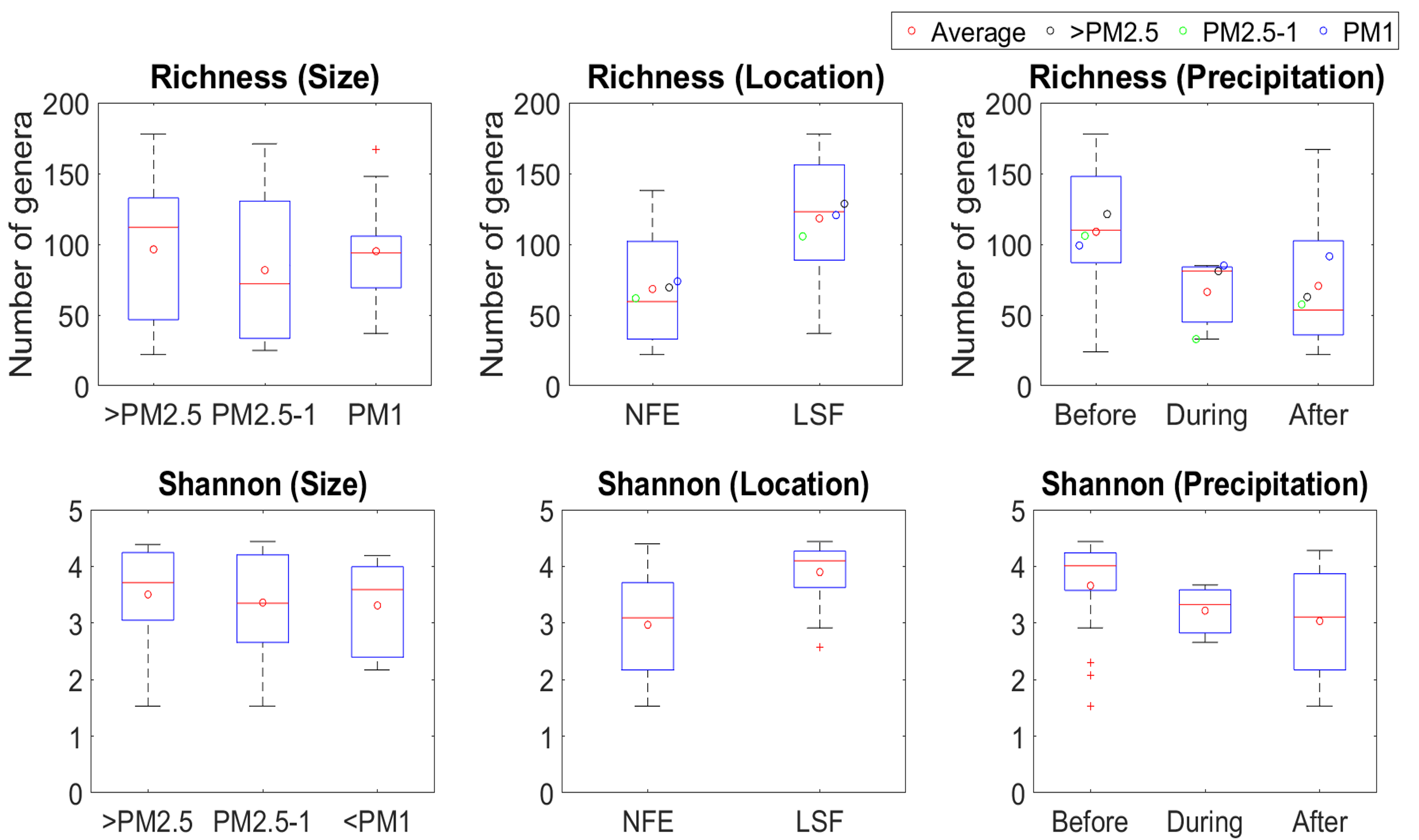Our group has multilpe projects that characterize the sequencing results from collected bioaerosols, revealing their biodiversity. We have developed a protocol to recover bacteria with low-biomass samples with appropriate quality control. Our results indicates the possibility of digging more complex and infomrative information from bioaerosol samples. These can be associated with the generation and transport of bioaerosols and connect to mitigation solutions.

Our campaign in 2022 compared the bioaerosols collected near animal barns and urban background. Bioaerosols are known to be a crucial factor in the transmission of pathogenic diseases in high-density livestock farming. However, their impact has yet to be thoroughly investigated, and there needs to be more information on size-resolved bioaerosols. Moreover, Rainfall represents a liquid-air interface activity that can serve as a potential source of bioaerosols, and its influence on aerosols or bioaerosols is complex. The concentrations of bioaerosols have unique characteristics during rain events. Large particles are washed out by combining rain droplets due to their substantial surface area. In contrast, some aerosols containing microorganisms undergo increased growth during rain, attributed to the agitation and high relative humidity conditions.








